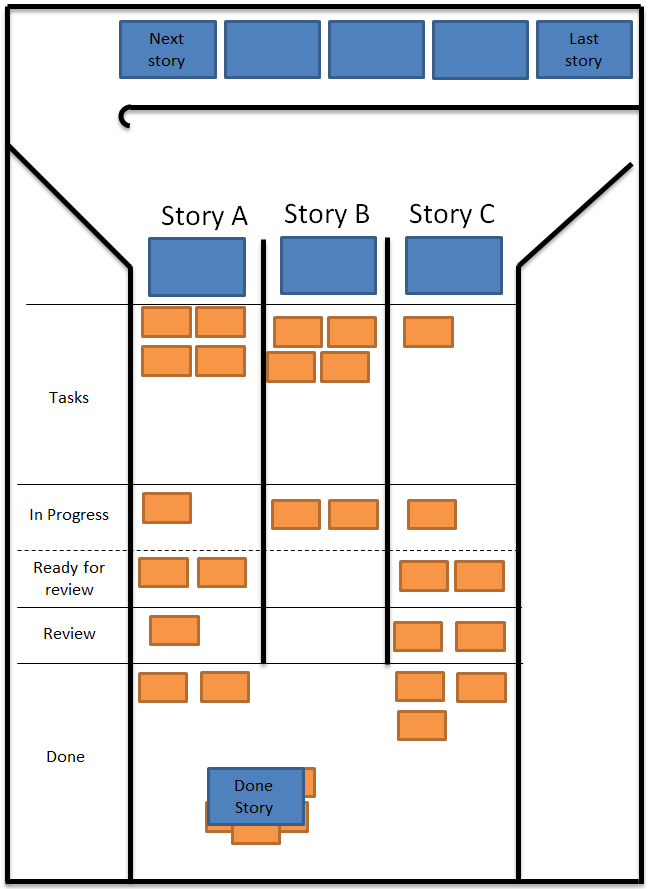Many agile and Scrum teams struggle to limit their work in progress. This results in task switching, delays and other wastes, overall reducing how much the team delivers. Physically limiting space on a team task board asks as a mental barrier. This can be used to limit their work in progress and hence deliver more. I have had good success with Funnel Boards. The User Stories fall from the backlog into one of three spots available in the funnel for User Stories. It is a simple and effective way to limit the teams WIP. I heard of Funnel Boards at Agile Tour London 2013.
 |
| Zombie Team Funnel Board |
The funnel board, leaves plenty of space around the edges for avatars, notes and other visualisation.
An empty Funnel Board
The backlog at the top, is the Sprint Backlog. It is populated during Sprint planning and empties out as the Sprint progresses. Hopefully it is empty at the very end of the sprint.
Work flows from top to bottom
As one of the three in progress stories is Done, the next story from the Sprint backlog flows down into the available spot.
A simulated sprint in progress





